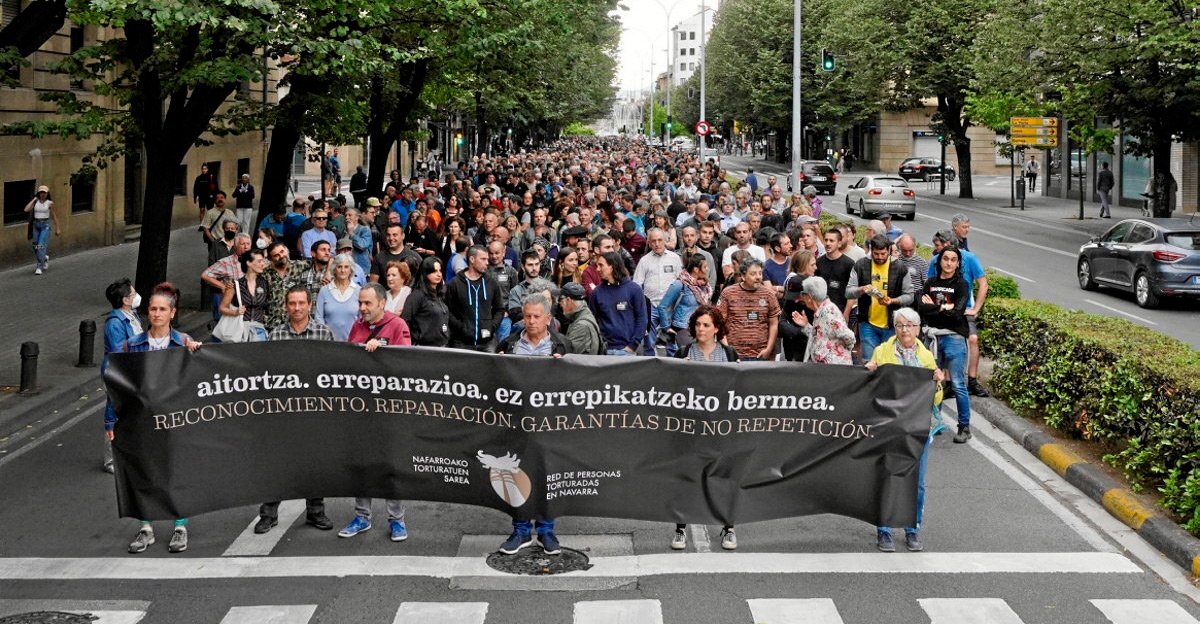A Basque citizen who witnessed the presence of the civil guard De los Cobos in the torture sessions
- Former prisoner Pello Alcantarilla tells the newspaper Berria that in 2004 he saw De los Cobos as he was tortured at the command of Tres Cantos de Madrid: “I was looking at me, waiting for him to leave me.” He has identified on television the current head of the Civil Guard in Madrid, arrested in Madrid.

Colonel Diego Pérez de los Cobos has been dismissed by the Government of Spain under the 8M demonstrations and a report on Covid-19. The Spanish Ministry of the Interior is being investigated for an earthquake that has caused dozens of charges and is being the subject of a media case. Pello Alcantarilla, arrested by the civil guard in 2004, has often had to watch him on television and on the news, and has decided to tell him his case.
He was reportedly arrested in 2004 when he was working with a truck in Burgos for his alleged relationship with ETA and transferred to Madrid to Tres Cantos. The torture was carried out from the very beginning, both on the road and in the command itself. He suffered violent blows, threats and incessant screams.
“Thank you Commissioner”
“At one point I gave up,” says Alcantarilla’s testimony, and then saw De los Cobos: “So he said to what was next to him: Eskerrik asko, Commissioner. Because I had managed to get my life granted. It was behind. At that time I was no longer with my eyes covered, I looked, and I saw it behind.”
He later suffered further torture until he attempted suicide and was taken to the hospital. In 2005 he was transferred to the French State, where he remained in prison since 1 October 2012.
As he explained, he identified it on television two months ago: “It’s him.” But the fact that he has recently had to see so many times in the news has reminded him of the then torture and decided to tell him what he has lived because they have caused him “pain and hatred.”
Linked to other cases of torture
De los Cobos' career has been linked to the extreme right, who was a candidate for Fuerza Nueva, and to cases of torture. In 1992 he was prosecuted with other civil guards for torturing Kepa Urra, but in 1997 he was acquitted by the judge of the Bizkaia Hearing.
When Alcantarilla was tortured in 2004, he was the head of the judicial police in Tres Cantos. This command has recorded cases of very serious torture for years, such as the murder of Gurutze Iantzi in 1993, the rape of Nekane Txapartegi in 1999 or the arrest of Euskaldunon Egunkaria in 2003.
In 2006, De los Cobos started acting as an advisor to the Ministry of the Interior and, among other things, designed the offensive of the civil guards on 1 October 2017 in Catalonia.
Euskal Herriko Bilgune Feministak deituta elkarretaratzea egin dute Hernanin Iratxe Sorzabali elkartasuna adierazi eta "babes osoa" emateko. Inkomunikatuta egon zen uneak berriz ere epailearen aurrean kontatu behar izatea, "bizi izandakoak utzitako ondorioen... [+]
For almost a century, there has been no generation in the Basque Country that has not known torture. There are 5,379 people officially since 1960, but there are many more, because appearing publicly as tortured still hurts. And probably because nothing has changed at the base... [+]
Otsailaren 13a Torturaren Kontrako eguna izanki, Euskal Herriko Torturaren Sareak gutun publiko bat igorri du. Poliziek torturatu euskal jendeen lekukotasunak bildu, eta aitortza egiteko xedea du sare berri horrek Euskal Herri osoan. Torturatuak izan diren 5.000 pertsonei... [+]
Jar gaitezen 2025erako proposamen politiko gisa, Espainiako Auzitegi Kolonialaren (AN) epai guztiak berrikusten hasteko eta makila bakoitzak bere belari eusteko.
Unionismoarekin lerrokatutako alderdi, sindikatu eta gizarte-erakunde gehienek, eta ez bakarrik horrela... [+]
This year marks the 51st anniversary of the United Nations proclamation of International Human Rights Day on 10 December. This date has become important in Euskal Herria and the Human Rights Observatory of Euskal Herria wants to offer some elements of reflection.
Progress on... [+]
In 2006, Baltasar Garzón, then star judge, suffered a kind of revelation and drafted a practice that guaranteed the rights of those detained for terrorism. The same judge saw hundreds of incommunicado detainees pass through his room, many with obvious signs of ill-treatment,... [+]
“In the newsletter today at noon, you will see the mayor of your capital, offering the main plaza of the city to the military body that tortured us. In today’s information at noon, you will see the structure that murdered our friends and relatives unravel through our... [+]
“In the newsletter today at noon, you will see the mayor of your capital, offering the main plaza of the city to the military body that tortured us. In today’s information at noon, you will see the structure that murdered our friends and relatives unravel through our... [+]


















